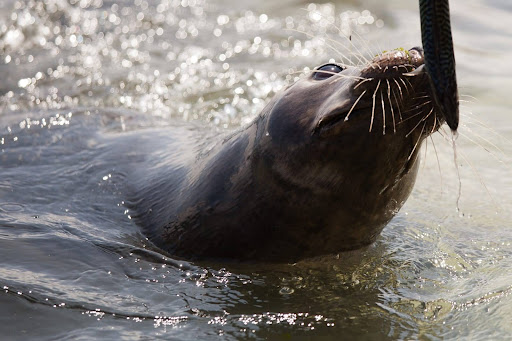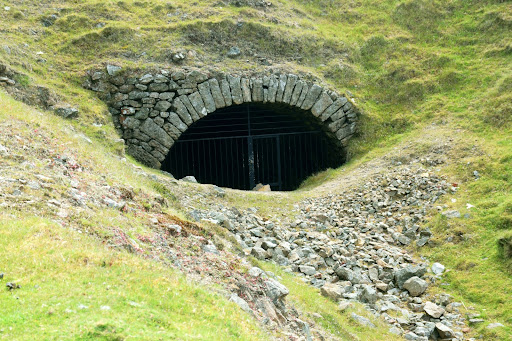Wildlife Watching in Cornwall – From Seals to Rare Birds
Cornwall's diverse landscapes offer some of the UK's most spectacular wildlife watching opportunities. From rugged coastlines to serene estuaries, our corner of the southwest is a haven for nature enthusiasts. At White Lily Holiday Chalets, we're passionate about helping our guests connect with Cornwall's natural wonders.
Marine Mammals - Meeting Cornwall's Coastal Residents
The Cornish coastline provides excellent opportunities to spot various marine mammals throughout the year.
Grey Seals
Cornwall is home to one of the UK's largest grey seal populations. These charismatic creatures can often be spotted at several locations near our chalets. Godrevy Point offers a perfect vantage point to watch seals basking on rocks, while Mutton Cove near Godrevy Lighthouse provides a protected area where seals regularly haul out. For those wanting a closer experience, boat trips run regularly from St Ives harbour to Seal Island. The best times for seal watching are during the spring and autumn months, though they can be seen year-round. Remember to maintain a respectful distance and never approach the seals, as they are wild animals that need their space.
Dolphins and Porpoises
The waters around Cornwall are frequently visited by several dolphin and porpoise species. Common dolphins can often be seen in pods from coastal paths or boat trips, while bottlenose dolphins are regularly spotted in St Ives Bay and Mount's Bay. The smaller and more elusive harbour porpoises are also frequent visitors to our shores. Summer months typically offer the best viewing opportunities, especially on calm days when the sea surface is flat.
Birdwatching Paradise: Cornwall's Feathered Treasures
Cornwall's varied habitats make it a premier destination for birdwatchers, from beginners to seasoned twitchers.
Coastal Birds
The dramatic cliffs of Cornwall provide nesting sites for numerous seabird species. Puffins, with their distinctive colourful bills, can be spotted on islands off the north coast during their breeding season from April to July. Guillemots and razorbills nest on narrow cliff ledges during spring and summer, while the distinctive calls of kittiwakes echo around coastal cliffs. Fulmars, often mistaken for gulls but actually related to albatrosses, can be seen gracefully gliding along the coastline.
Rare and Special Species
Cornwall is known for attracting some particularly special bird species. Choughs, with their distinctive red legs and curved red bills, have made a remarkable comeback in Cornwall and represent a conservation success story. The world's fastest birds, peregrine falcons, can be spotted hunting along the coastline, while rare cirl buntings are found in only a few locations in the UK. During migration periods, magnificent fishing ospreys can sometimes be spotted at reservoirs and estuaries throughout the region.
Wetland Reserves
Several excellent reserves near our chalets provide perfect bird-watching opportunities. Marazion Marsh, Cornwall's largest reedbed, is home to bitterns, water rails, and many warbler species. The Hayle Estuary serves as an important site for wintering waders and wildfowl, while Walmsley Sanctuary offers excellent opportunities for spotting winter visitors such as Brent geese.
Planning Your Wildlife Watching Trip
Essential Gear
To make the most of your wildlife watching experiences, we recommend bringing the right equipment. Binoculars are essential for spotting wildlife at a distance, while a field guide or wildlife app helps identify what you see. A camera with a zoom lens allows you to capture memories without disturbing wildlife, and weather-appropriate clothing is crucial as Cornwall's weather can change quickly. Above all, patience is the most important tool for any wildlife watcher.
Guided Experiences
For those seeking expert guidance, several local operators offer wildlife-focused experiences. These include boat trips specifically designed for wildlife watching, guided walks with local naturalists, and photography tours focused on capturing Cornwall's wildlife.
Responsible Wildlife Watching
We're committed to sustainable tourism and protecting Cornwall's precious wildlife. When watching wildlife, please keep a respectful distance from all animals, never feed wild animals, and stay on designated paths to protect habitats. Always take all litter home with you and consider donating to local wildlife conservation charities to support ongoing protection efforts.
Your Wildlife Sightings
We love hearing about our guests' wildlife encounters! Share your photos and sightings with us during your stay, and with your permission, we may feature them on our social media channels. Your observations also help us keep track of the wildlife around our chalets.
Whether you're an experienced naturalist or simply curious about the natural world, Cornwall offers wildlife watching opportunities that will create lasting memories. Book your stay at TwiceAsNice Chalets today and discover the wild side of Cornwall!

